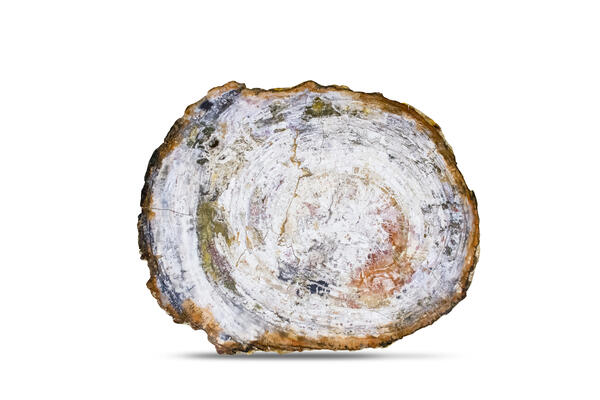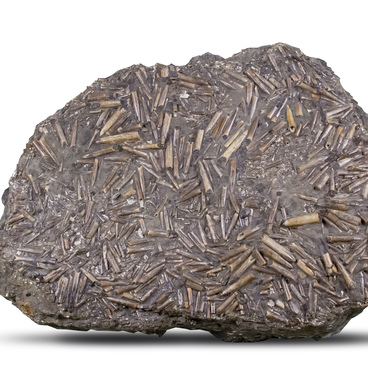Araucaria is the oldest existing evergreen coniferous evergreen tree. Its name comes from the Arauco Province in southern Chile. That’s where the Chilean Araucaria grows: scientists first described it in 1782.
Scientists found out that the first plants from this family appeared at the beginning of the Mesozoic era, in the Triassic period, which is more than 200 million years ago. Their dispersal rate peaked in the Jurassic and Cretaceous periods and by that time they were already growing on all continents. However, by the end of the Cretaceous period, the number of Araucaria drastically decreased, in the Northern hemisphere they disappeared almost completely.
Modern Araucaria reaches 60 meters in height on average. Sometimes people come across giant trees up to 90 meters. They grow in South America and Australia, in New Guinea, New Caledonia, and Norfolk. These are long-living plants: the age of some species can be up to 2000 years.
A cross-section of an ancient fossilized Araucaria is housed in the collection of the Natural History Museum of Tatarstan. Its size is 102×81 centimeters; the thickness is 5 centimeters.
This exhibit came to the museum from the Petrified Forest American National Park, which name means “Fossilized Forest”. It is located in the state of Arizona between the cities of Navajo and Holbrook. The park is considered one of the largest clusters of fossilized trees in the world. Most of these plants belong to the species of Araucaria Arizonica: they are found mainly in the southern part of the park.
Fallen trees during the late Triassic period were covered with sediment, which prevented oxygen access. Gradually, it was compacted and turned into rock, and the wood was replaced by silicon dioxide and turned into stone. Notably, its appearance did not change; only when reacting with iron oxides it was colored in yellow-orange shades.
In addition to fragments of wood, petrified remains of dinosaurs, shellfish and insects are often found in the Petrified Forest Park. According to them, scientists can restore the appearance of living creatures that lived there in ancient times.
Scientists found out that the first plants from this family appeared at the beginning of the Mesozoic era, in the Triassic period, which is more than 200 million years ago. Their dispersal rate peaked in the Jurassic and Cretaceous periods and by that time they were already growing on all continents. However, by the end of the Cretaceous period, the number of Araucaria drastically decreased, in the Northern hemisphere they disappeared almost completely.
Modern Araucaria reaches 60 meters in height on average. Sometimes people come across giant trees up to 90 meters. They grow in South America and Australia, in New Guinea, New Caledonia, and Norfolk. These are long-living plants: the age of some species can be up to 2000 years.
A cross-section of an ancient fossilized Araucaria is housed in the collection of the Natural History Museum of Tatarstan. Its size is 102×81 centimeters; the thickness is 5 centimeters.
This exhibit came to the museum from the Petrified Forest American National Park, which name means “Fossilized Forest”. It is located in the state of Arizona between the cities of Navajo and Holbrook. The park is considered one of the largest clusters of fossilized trees in the world. Most of these plants belong to the species of Araucaria Arizonica: they are found mainly in the southern part of the park.
Fallen trees during the late Triassic period were covered with sediment, which prevented oxygen access. Gradually, it was compacted and turned into rock, and the wood was replaced by silicon dioxide and turned into stone. Notably, its appearance did not change; only when reacting with iron oxides it was colored in yellow-orange shades.
In addition to fragments of wood, petrified remains of dinosaurs, shellfish and insects are often found in the Petrified Forest Park. According to them, scientists can restore the appearance of living creatures that lived there in ancient times.



